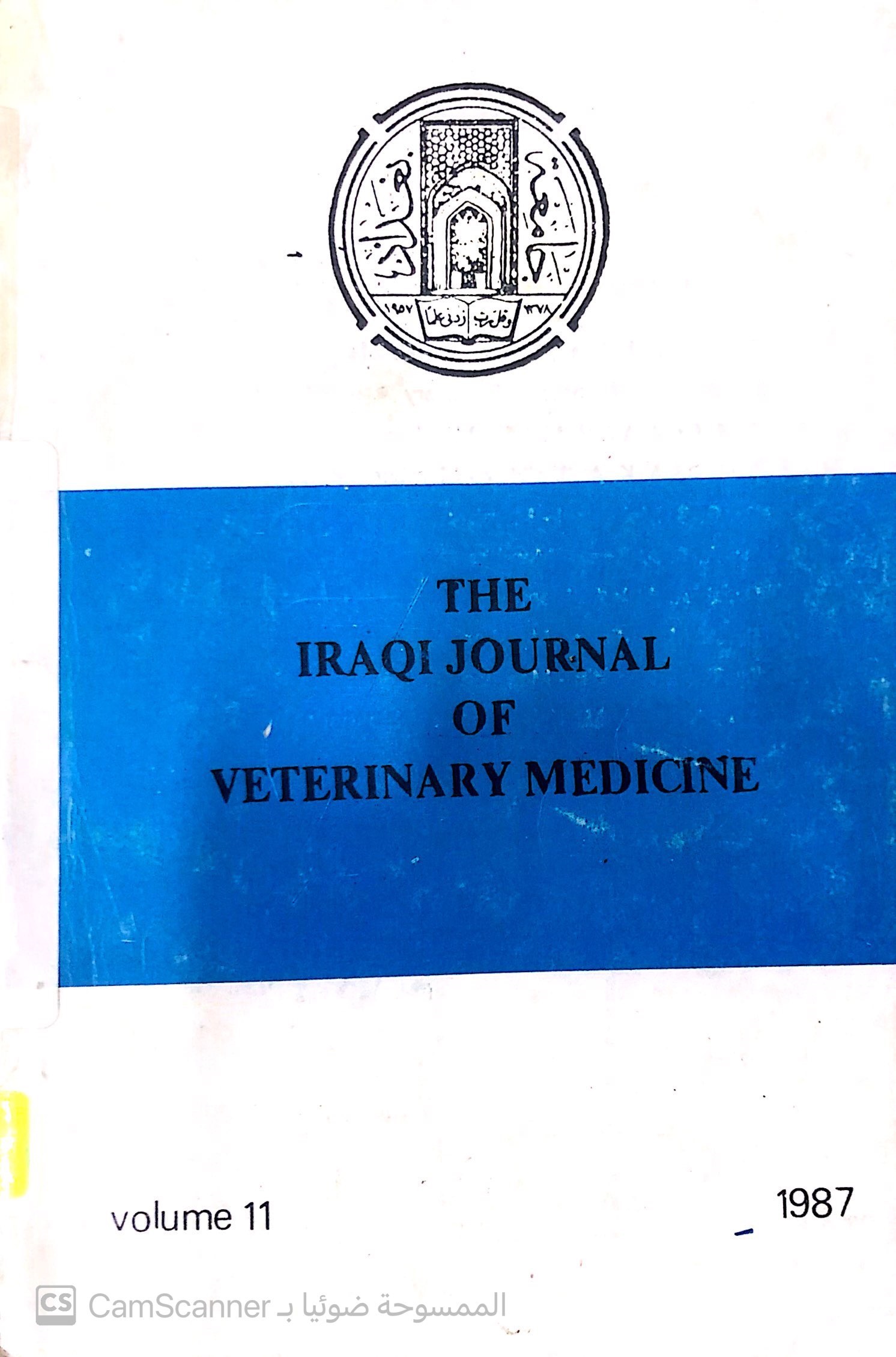EXPERIMENTAL STUDY OF THE PATHOGENICITY OF SHEEP AND BUFFALO ISOLATES OF FASCIOLA GIGANTICA IN GOATS
Main Article Content
Abstract
In an experiment designed to study the pathogenicity of two isolates of F. gigantica, one of sheep and the other of buffalo origin, twenty-one, 3- months old goats were divided into 3 equal groups. The first received 5 metacercariae per kg body weight of the sheep strain and the second group has given the same dose of buffalo strain, while the third group was left as control.
The main pathological findings were characterized as: fibrinous. perihepatitis, haemorrhagic tracts, haematomas, focal necrosis, hydroperitoneum and in the chronic phase by fibrosis and the typical pipe-stem liver. In animals of the second group, lesions were minor and consisted only of fewer heemorrhagic foci.
The possible explanation of the difference in pathogenicity is discussed.
Downloads
Article Details
Section
How to Cite
Publication Dates
References
Al-Barwary, S.E. (1977). A survey om liver infections with Fasciola gigantica among slaughtered animals in Iraq. Bull. End. Dis. 18, 75-92.
Al-Darraji, A.M.; Altaif K.I. and Abdul-Kader, S. (1985). Experimental caprine and ovine fascioliasis- Pathological comparative study. Iraqi Med. J. 33, 120-128.
Al-Kubaisee, R.Y.S. (1986). A comparative study of sheep and buffalo isolates of Fasciola gigantica in snail Lymnaea auricularia and goats. M.Sc. thesis University of Baghdad.
Al-Naamy, R.A.S. (1978). Studies on some aspect of ovine fascioliasis in Iraq with particular reference to pathology and haematology of the disease due to Fasciola gigantica infection. M.Sc. thesis, University of Baghdad.
Altaif, K.I. (1979). Effect of anthelminitic treatment on performance of Awassi sheep in Iraq. Trop. Anim. Hith. Prod. 11, 241-245.
Barbara, M.W. and Coyle, T.J. (1960). Uganda zebu cattle naturally infected with Fasciola gigantica - Changes in serum protein. J. Comp. Path., 70, 176-181.
Boray, J.C. (1963). The ecology of Fasciola hepatica with particular reference to its intermediate host in Australia. Proc. 17th Wild. Vet. Congr. Hanover,709-715.
Boray, J.C. (1969). Experimental fascioliasis in Australia. Adv. Parasitol. Dawes, B. (ed.). London and New York, Academic press, 7 : 95-210.
Dunn, A.M. (1978). Veterinary Helminthology, Willian, Heinemann Medical book, Ltd., London.
El-Harith, A. (1977). Observation on influence of intermediate host in experimental fascioliasis.Ph.D. Thesis, University of Utrecht, Netherlands.
Grigoryan, G.A. (1953). The clinical course of – acute fascioliasis in sheep caused by Fasciola gigantic, Moscow: Izdatelstvo Akademii Nauk SSSR, 170-175. (In Russian).
Guralp, N. Ozcan, C. and Simms, B.T. (1964). Fasciola gigantica and fascioliasis in Turkey, Am. J. Vet. Res. 25: 199-210.
Hammond, J.A. (1973). Experimental chronic Fasciola gigantica infection in sheep. Trop. Anim. Hlth. Prod. 5: 12-21.
Hsu, H.F. and Hsu, S.Y. (1960). The infectivity of four geographic strains of Schistosoma japonicum in the rhesus monkey. J. Parasitol., 46: 228.
Jensen, R. (1974). Disease of sheep. Philadelphia, Lea and Febiger (Publisher). 1st edition. |
Kadhim, J.K. and Altaif, K.I. (1970). The experimental demonstration of Lymnaea lagotis euphratica as an intermediate host of Fasciola gigantica in Iraq. Ann. Trop. Med. Parasitol., 64, 335-337. |
Schroeder. H. A. Balassa, J. J. and Vinton, Jr. W.H. (1965). Chromium, Cadmium and lead in rats; Effects on life span, tumors and tissue levels. J. Nutrition 86: 51-66. .
Selye, H. Tuchweber, B. and Bertok, L: (1966). Effect of lead acetate on the suscibility of rats to bacterial endotoxins. J. Bacteriol 91: 884-890.
Williams, H. W., Caraway, W. T. and De Young, W. A. (1954). Inactivation of antibodies. Arch. Neurol and. Psychiat. 72: 579-582.
Wright, C.A. (1960). Relationships between trematodes and molluscs. Ann. Trop. Med. Parasit. 54, 1-7.
Wright, C.A. and Bennett, M.S. (1967). Studies on Schistosoma haematobium in the labroatory. II. A strain from South Arabia. Trans. Soc. Trop. Med. Hyg., 61, 228-233.





